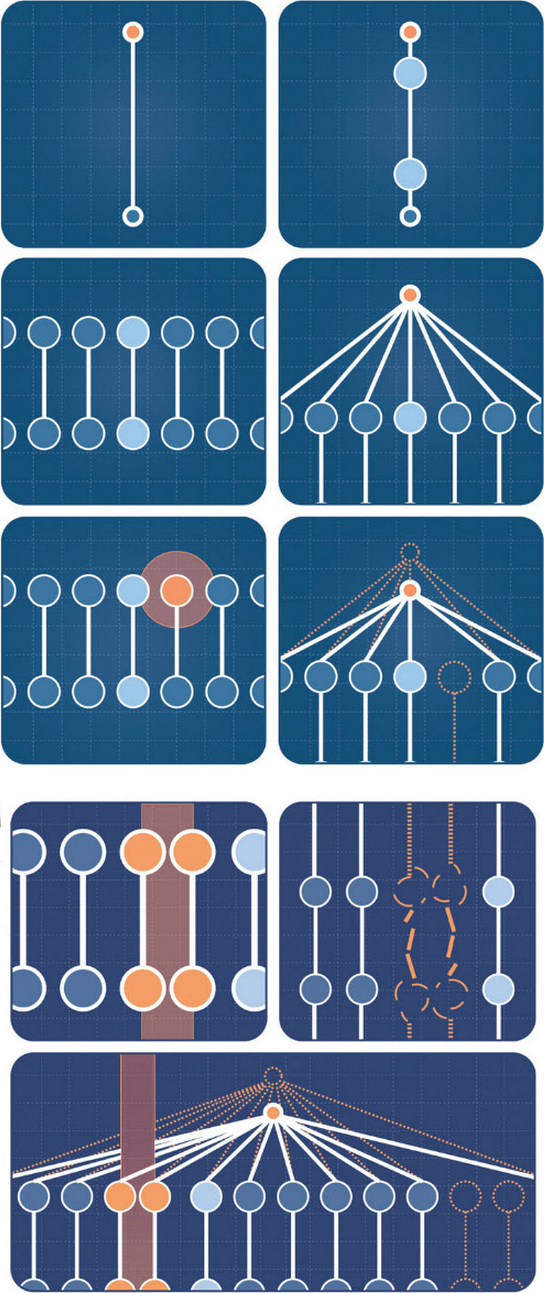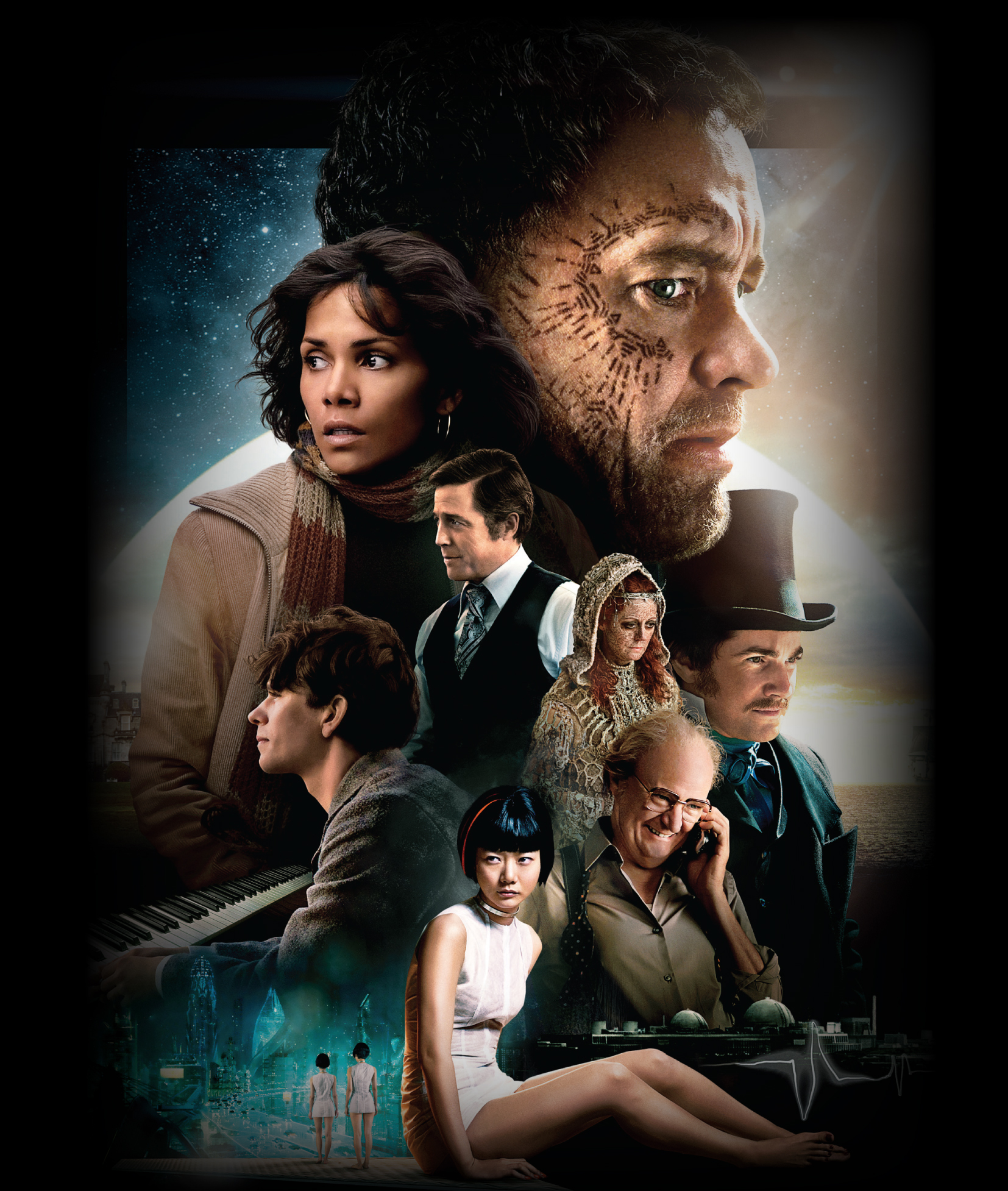
Last week, we looked at this article on the quest for validation of a multiverse hypothesis. If each universe in the multiverse is physically distinct, they might interact with each other. Those interactions could leave telltale patterns in the cosmic background radiation. (Cosmic background radiation is an energy signal from the early days of the universe; it’s basically our universe’s very first baby photo.) Find those patterns — circular impressions, like you get when two bubbles bump into each other — and you might just have evidence of universes beyond our own.
Now, whenever the multiverse comes up, one of the obvious questions is how to reconcile the assertion that the only reality is what we can hear, see, or touch with the idea that most of reality, by the definition of the multiverse, can never be directly experienced. Or to put it another way, the only evidence we might hope to have of a multiverse is indirect, via influence on the world we can observe — which raises some interesting comparisons. But I’ll leave that particular metaphysical conversation for another place and time. What interested me most about this item was that I had read it before. Not in another scientific publication, mind you, but in that august periodical known as New Avengers from Marvel Comics.
Parallel or alternative universes have been a staple of science fiction and particularly comic books for years. They are a useful device for narrative worlds whose stories have been unfolding continuously for over 50 years. As you might imagine, continuity can get tricky for such tales, so one convenient fix is to retroactively make events that contradict each other occur in separate universes. They also allow for fun counterfactual explorations. What if baby Kal-El had crashed in the Steppe of Soviet Russia instead of the plains of Kansas? What if Charles Xavier was killed long before he opened a school for gifted youngsters? What if Earth was populated by sentient farm animals and one of them became radioactive and bit a spider? The multiverses of Marvel and DC Comics have become so complex and integral to their storytelling that the publishers have catalogs of realities that are named or numbered to keep track of them all.
The current Avengers storyline is of a different sort, however. Rather than examining what the world would be like if, say, Wolverine had 4 claws instead of 3, its a story about the multiverse itself. Specifically, it is about the different distinct realities of the multiverse bumping into each other. Of course, because it’s a superhero comic, those bumps don’t just cause extra dimples in cosmic baby photos; they make entire universes explode.
Now, it is almost certain that the comic book story was inspired or influenced by scientific research in cosmology, the origin of the universe, and the inflation models that predict the kinds of additional universes that could bump into ours. I don’t think that the work mentioned in the article to which I linked is based on Marvel Comics. But the similarities did make me wonder about the longer term interactions between science fiction and science fact.
Take a look at your local movie marquee. While I don’t think their presence signals a nadir in Hollywood creativity (restaging and reimagining familiar tales was common practice before film was ever invented), the titles on those marquees remind me a lot of my childhood. Transformers, Teenage Mutant Ninja Turtles, Star Wars, and X-Men were all very popular with my generation during our formative years. And now that we’ve grown up and get to make films, we want to return to those worlds. Filmmakers like JJ Abrams have made no secret of their enthusiasm for these properties, nor of the influence that has on their decision to leave their own mark on the material.
Is it plausible, then, that something similar happens in the sciences? Of course, in certain domains research will be strongly constrained by the data; no matter what movies you liked as a kid you probably can’t get dinosaur DNA from fossilized mosquitoes, for example (but notice that we tried). But at the edges of empiricism, isn’t there more room for imagination to guide us? When there are seemingly endless options for describing the as-yet undescribed, why wouldn’t we choose the scenarios for which we at least have a vocabulary, regardless of where that vocabulary comes from?

I don’t think that, by suggesting that science can be influenced by science fiction, I’ve revealed a previously hidden aspect of the practice of science. I do wonder, though, how much of a positive feedback loop can be created. Are we currently fascinated by the multiverse because it is an accurate description of reality, or because it’s something we know how to talk about?
Of course, the same criticism has been levied against religion. We believe in some kind of deity, the story goes, because sentient agency was the only way we knew how to talk about cause and effect. Personally, I think this is a misunderstanding of God, or at least the God of the Bible who is equally critical of the human inclination to invent a new deity every time a new experience complicates their existing schema. His sovereignty is axiomatic, not a stop-gap because we can’t think of anything better.
Consequently, I wonder how much of our (mis)understanding of religion is influenced by the stories we tell about it. Traditional religions rarely appear in our stories about the future. The crew of the Enterprise might encounter religions on other worlds, but there are few believers among their ranks. After all, those alien religions are so obviously cultural artifacts of their planets of origin that clearly that’s all Earth religions are as well. Other glimpses of religion in the future take present day banalities and craft religious practices around them, as some assume happened in our past to create the religions of the present.
How would we talk about religion if we told different sorts of stories about our future? How do we tell those stories in a way that is culturally relevant?
Andy has worn many hats in his life. He knows this is a dreadfully clichéd notion, but since it is also literally true he uses it anyway. Among his current metaphorical hats: husband of one wife, father of two teenagers, reader of science fiction and science fact, enthusiast of contemporary symphonic music, and chief science officer. Previous metaphorical hats include: comp bio postdoc, molecular biology grad student, InterVarsity chapter president (that one came with a literal hat), music store clerk, house painter, and mosquito trapper. Among his more unique literal hats: British bobby, captain’s hats (of varying levels of authenticity) of several specific vessels, a deerstalker from 221B Baker St, and a railroad engineer’s cap. His monthly Science in Review is drawn from his weekly Science Corner posts — Wednesdays, 8am (Eastern) on the Emerging Scholars Network Blog. His book Faith across the Multiverse is available from Hendrickson.

Hi Andy,
Enjoyed this post! It also got me wondering where there are examples of positively portrayed religious characters in sci fi (I agree that it often seems there aren’t many). I’ve always liked the Catholic priest in The Mote in God’s Eye. He’s learned, compassionate, and thoughtful.
I’m intrigued by Firefly’s take on religion, where at least two characters who seem relatable and intriguing have longstanding religious commitments. I don’t think that makes the series pro-religion, but I like how Shepherd Book is well-rounded and compelling on a number of levels.
Thanks, Hannah.
I’m not familiar with “The Mote in God’s Eye” but I now I am curious to check it out.
My recollection is that Palmer Joss from “Contact” (Matthew McConaughey in the movie) was a religious character of some depth. I don’t know that I’d say he was portrayed favorably, but he did come across as a worthy peer to Dr. Arroway.
Peter David’s “X-Factor” had several characters of different faith traditions, and none of them played to the stereotypes of those traditions. One of those characters’ arcs is a particularly compelling study in grace and mercy.
Shepherd Book is an interesting character. On the one hand, he is a character from the far future who nevertheless practices something that can be recognized as having Christian roots. On the other, it does feel like the sort of religion that some secularists would like Christianity to be — all the personal improvement and social justice with none of the proselytizing or inconvenient morality.
Robert Sawyer’s “Calculating God” is one of the more intriguing examples. The main character is a typical materialist scientist. When he meets an alien who comes to Earth from another planet, he assumes this visitor from even-more-advanced society will agree that science has eliminated the need for God. Instead, the alien informs him that their even-more-advanced science has proved that God does, indeed, exist.